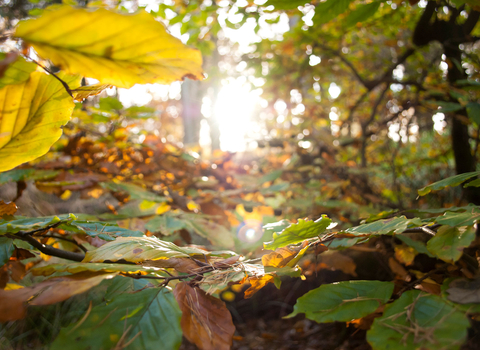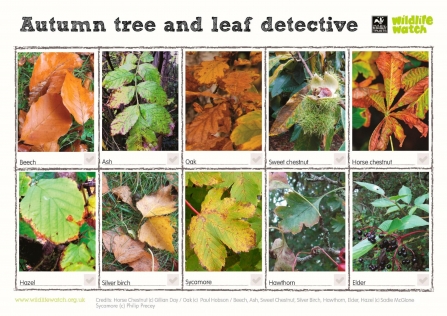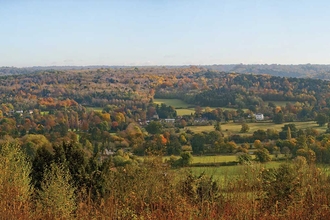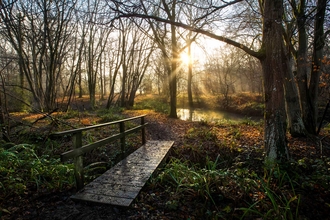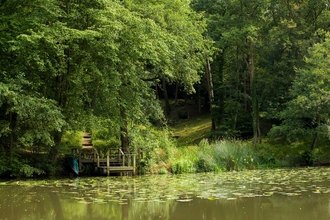Autumn woodlands
Whether it's hunting for conkers, kicking through drifts of leaves or witnessing stunning sunsets, Autumn is a magical time of year to experience woodlands.
As the days start to shorten and the once green leaves take on fiery shades, wildlife is making the most of the last warm days - with birds and mammals in search of fruits and nuts before winter makes an appearance.
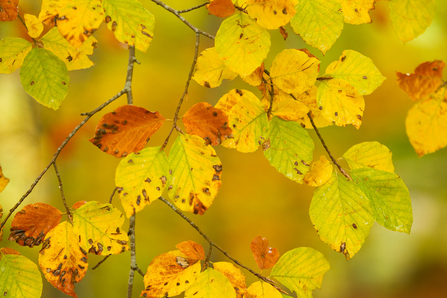
© Mark Hamblin/2020VISION
Beech trees put on a particularly spectacular autumn display.
Autumn woodland factfile
Why do leaves change colour in autumn?
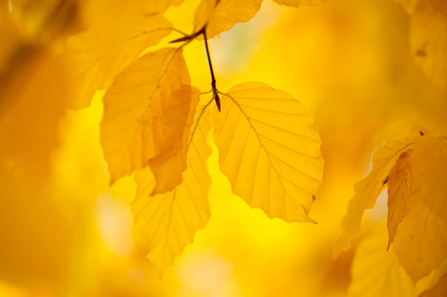
© Ross Hoddinott/2020VISION
Shorter days and cooler nights trigger seismic changes in leaves during autumn, creating spectacular seasonal displays. As the days become shorter, the production of green chlorophyll begins to stop. Existing chlorophyll breaks down and the green colour fades. Yellow and orange 'carotenes' that you can’t normally see become visible, making the leaf change colour.
A layer of cork-like cells also form across the base of leaf stalks. Sugars then become trapped and concentrated in the leaves and are converted to 'anthocyanins', making them appear red, purple or pink.
Weather conditions can also have an effect on leaf colour. Sunny dry days and cold (but not freezing) nights create the best autumn colours.
why do conker tree leaves go brown first?
Come late summer, horse chestnut trees can look quite sorry for themselves. This has nothing to do with the changing of the seasons, but is actually down to a leaf-eating insect.
The horse chestnut leaf-mining moth was first identified in Wimbledon in 2002 and has since spread rapidly across England. The moth larva feed inside the leaves, causing brown or white blotch mines to develop between the leaf veins. Heavily infested trees will drop their leaves early.
Although it looks unattractive, research has show that the insects have almost no effect on the growth rate or health of the trees.
Conker or chestnut?
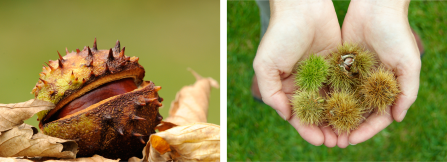
While horse chestnuts (conkers) and sweet chestnuts might look similar (both have a green spiky shell and a brown nut), they are in fact very different. Whilst sweet chestnuts are delicious when roasted, bitter conkers contain aescin and are mildly poisonous, so you don't want to eat them.
How to tell horse chestnuts and sweet chestnuts appart
Sweet chestnuts are often found two or more to a shell, which has many extremely sharp long densely clustered burrs. Conkers are rarely found more than two to a shell, which can have widely spaced short spikes or be completely smooth.
Tree ID
Sweet chestnut trees have single toothed leaves, whereas horse chestnuts have a compound leaf with 6 or 7 leaflets. Sweet chestnuts also have multiple spikes of yellowish white flowers in spring, whilst conker trees have single upright spikes of attractive blooms.
Autumn Woodland wildlife
Come autumn, our woodlands are still be busy with wildlife.
Look out for screeching jays hoarding acorns for the winter, flocks of tits in search of food and ivy flowers buzzing with hoverflies, wasps and bees. If you are lucky you might also spot one of the last red admirals of the season.
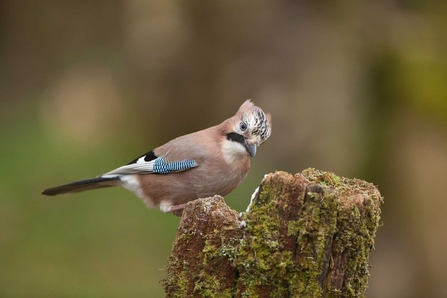
© Mark Hamblin/2020VISION
Autumn fungi
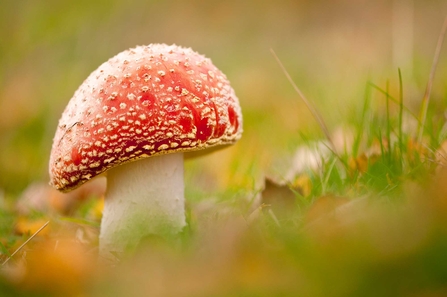
© Ross Hoddinott/2020VISION
From the strangely named bracket fungus chicken of the woods, to the classic fairy toadstool fly agaric, our woodlands are home to a huge variety of fungi species.
Autumn leaf ID
Download our handy guide to identifying autumn leaves.
Top autumn woodland reserves
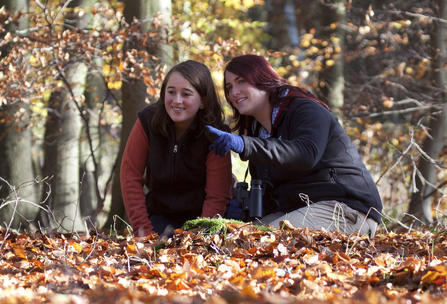
© Tom Marshall

